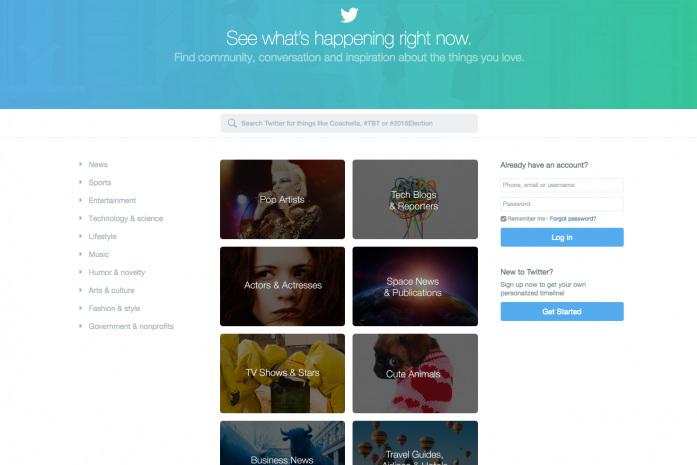
“Today, we’re making a big change for the many millions of people who visit every month who don’t log in, but still want to know what’s happening,” Twitter’s Gabor Cselle said in a blog post introducing the new look.
So now when you hit the homepage you’ll see a list of topics, among them pop artists, actors and actresses, and business news. Click on one and you’ll be served up a timeline of tweets from some of the popular accounts engaging with that topic. “It’s rich, real-time content,” Cselle says.
It certainly makes sense for Twitter to make more use of its homepage, which now offers content to non-users who might be compelled to sign up to the service if they like what they see. It also increases engagement among those with accounts who aren’t signed in on desktop but want to dip in to see what’s happening on the social media service. It’s clearly a lot more interesting than being faced with a simple login page.
The new design is being rolled out to U.S.-based users first, and will land in other locations “over time,” the company said.
‘You may also like’
In another development, Twitter is reportedly testing a new way of improving discovery on the site. Spotted by Venture Beat, the new feature appears as a ‘you may also like’ column down the right side of individual tweet pages on the desktop version of Twitter. The column comprises five related tweets from people you don’t follow, the idea being that if you find their messages interesting enough, you’ll dig a little deeper and end up hitting the ‘follow’ button.
The company is always on the lookout for new ways of getting users to follow more people, which should lead to increased engagement throughout the microblogging service, something that would please advertisers no end, of course. Twitter said Wednesday the feature is currently “an experiment for a limited group of users,” so it may be a little while before it shows up for more users, if at all.

